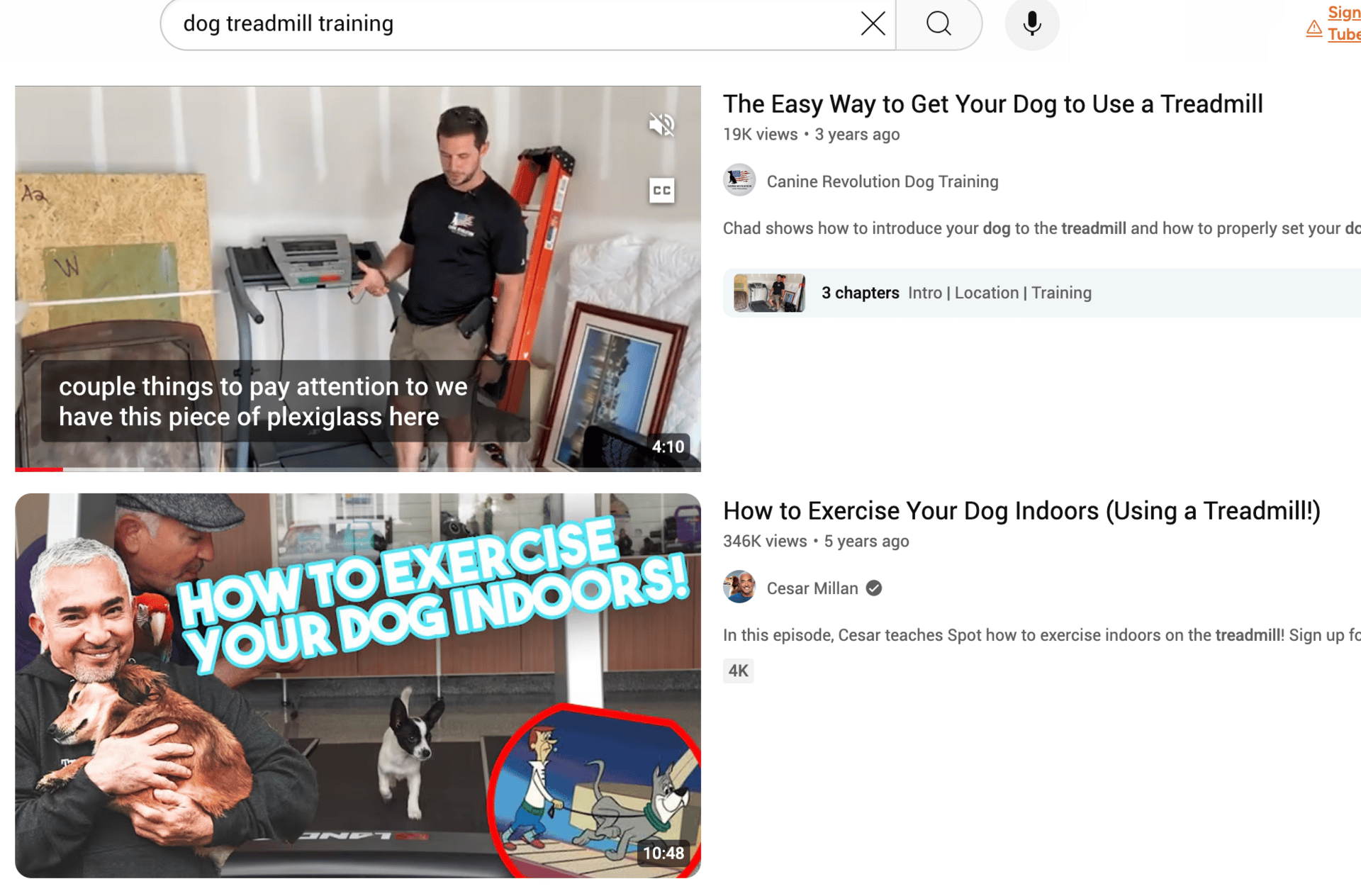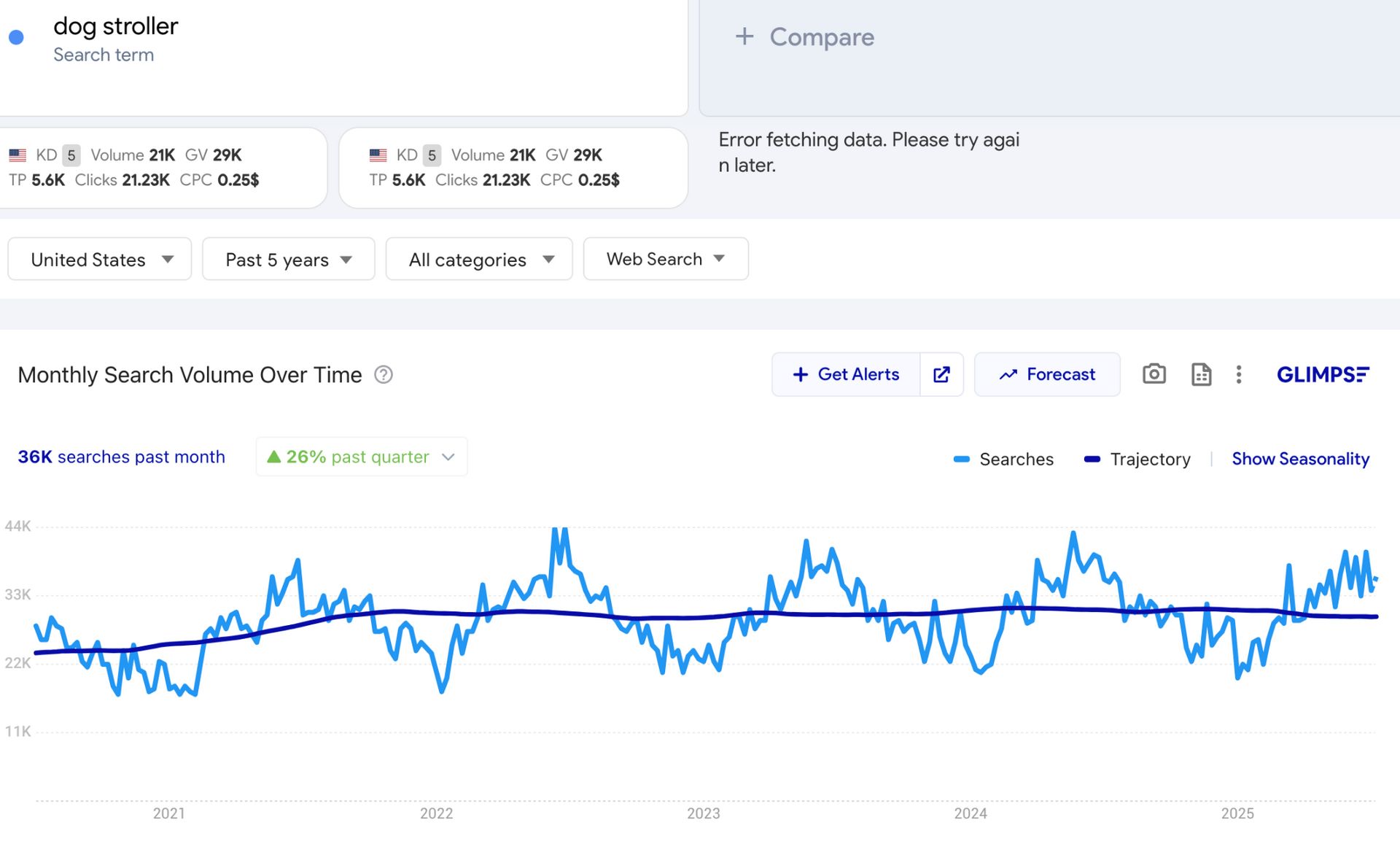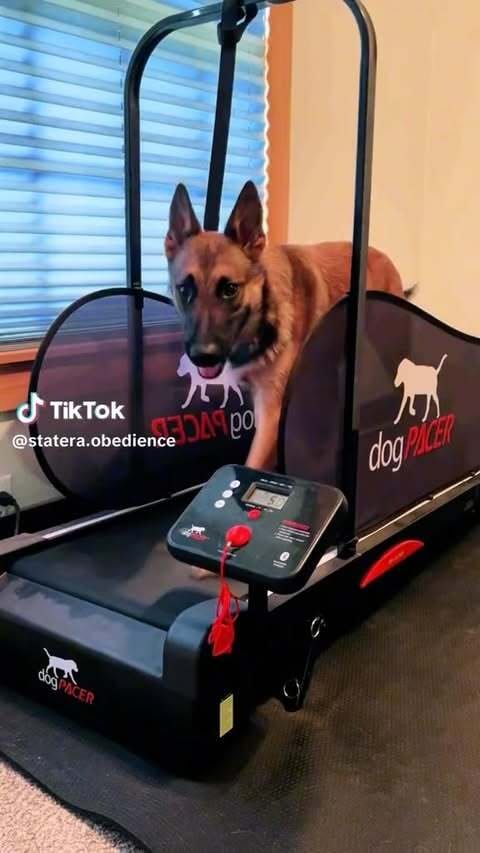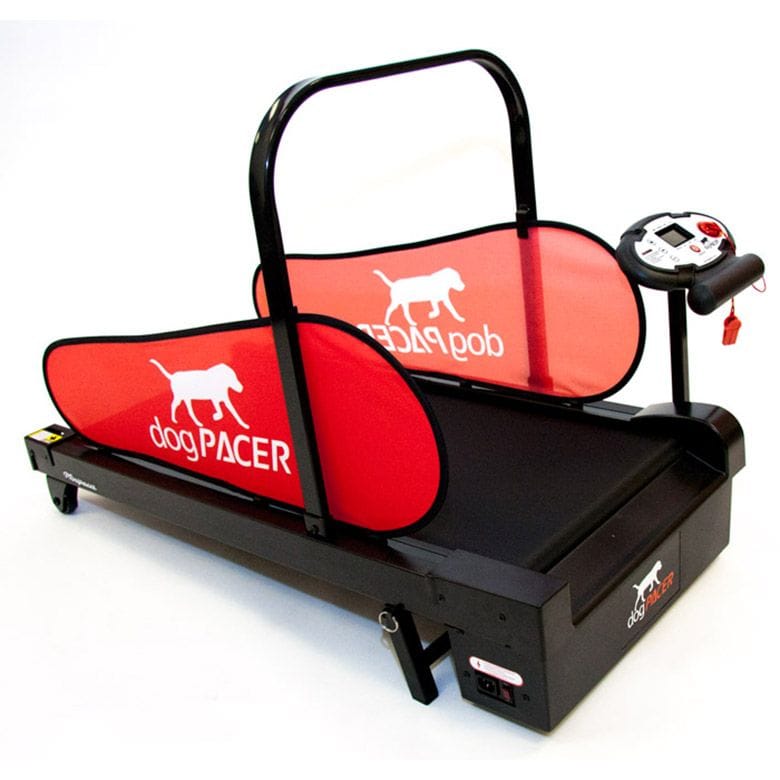- The Woof
- Posts
- The Treadmill Brand That Proves Pet Fitness Is Getting Serious
The Treadmill Brand That Proves Pet Fitness Is Getting Serious
Social videos, rehab clinics, and city dogs: How indoor pet fitness is quietly going mainstream.

Issue #216
July 16th, 2025
Quick Hits:

More than half of America’s dogs are tipping the scales. In fact, 59% of U.S. dogs were classified as overweight or obese in a 2022 survey by the Association for Pet Obesity Prevention.

Pet owners and vets alike are sounding the alarm on this canine health crisis. In fact, 35% of U.S. dog owners identified their pets as overweight or obese in 2024, up from 17% in 2023.
Even though dog owners are slowly waking up to seeing obesity in their own pets, dogPACER saw the writing on the wall a long time ago (founded in 2011). They spotted an unconventional opportunity: indoor dog treadmills.
Much like Rogue Fitness did for human home gyms, dogPACER has built a loyal following (and a thriving business) by selling sturdy, portable treadmills for dogs as a reliable indoor fitness solution.
It’s an idea that once made people chuckle, but today it’s proving to be a serious answer to keeping our furry friends healthy when regular walks aren’t enough or not viable.
How dogPACER Identified the Niche
Dog treadmills a decade ago sounded “weird” to many.
Co-founder David Ezra experienced the skepticism firsthand: “Most people laugh and say, ‘My dog would never do that,’ or my favorite, ‘I walk my dog,’” he recalled.
But Ezra and his partner had a different perspective. With backgrounds in the fitness industry, they observed clients at their gym bringing dogs who still had energy to burn and thought, why not a treadmill for dogs?
They built a prototype in 2011 for Ezra’s own energetic pup, proving that with training, nearly any dog can learn to trot on a treadmill and love it. The initial laughter quickly gave way to curiosity once people saw it in action.
What changed since 2011?
Several cultural and environmental shifts made at-home dog exercise more appealing:
🏙️ Urbanization & Small Homes: More pet owners live in apartments or homes without yards, limiting space for dogs to run. A treadmill offers a way to exercise a large dog even in a studio flat. DogPACER specifically designed a “MiniPacer” model for small spaces and dogs under 55 lbs, so it can tuck into a corner of a condo. Its folding, lightweight frame (just ~48 lbs) and wheels make it easy to stow away – a far cry from bulky human treadmills.
🌨️ Weather and Climate: Blistering summers, winter blizzards, pouring rain – extreme weather can derail daily walks. No more skipped workouts due to heat waves or icy sidewalks. This especially resonated with dog owners in cold climates or rainy regions who struggle to give their pets enough activity during long winters.
🤧 Health and Allergies: Some dogs (and people) have allergies or breathing issues that make outdoor exercise challenging – think of dogs with environmental allergens or owners with asthma. An indoor workout avoids pollen, pollution, and seasonal allergens. It’s a controlled environment, which is also useful for dogs recovering from injuries (veterinary rehab treadmills are often underwater, but dry treadmills can be used for gentle rehab too).
👍️ Behavior & Safety: A tired dog is a happy dog. Many high-energy or reactive dogs can’t safely romp at dog parks or on busy streets due to behavior triggers. Treadmill training gives these anxious or reactive pups a way to burn off energy in a safe, controlled setting, reducing destructive behaviors born of boredom. Trainers note that consistent treadmill exercise can even improve a dog’s focus and lessen problem behaviors by providing an outlet for pent-up energy. For owners with mobility issues or those recovering from injuries themselves, a dog treadmill allows the pet’s exercise to not miss a beat.
“That thing saved my life… I could exercise my dogs while sitting in a chair.”
DogPACER zeroed in on these use cases and engineered their product accordingly. Their flagship MiniPacer treadmill (launched 2012) is built from durable carbon steel yet sized for apartments, and comes with programmable speed settings from 0.5 up to ~7.5 mph in small 0.1 mph increments.
It even has a slight 4.5-degree incline built in, to better simulate outdoor terrain and engage muscles.
Safety was a top priority: dogPACER treadmills include side panels (like blinders) to keep dogs focused and prevent accidental dismounts, and a quiet motor that won’t spook pets.
By treating the design with the same seriousness as a human treadmill, the founders made sure it wasn’t a gimmick – it was real fitness equipment tailored to canines.
Crucially, dogPACER also kept the price relatively affordable.
Traditional dog treadmills from competitors used to cost upwards of $1,000, but dogPACER’s units debuted around $499. This lower price point (achieved through streamlined design and manufacturing at scale) meant average pet owners could consider it, not just kennels or pros.
In the first 7 months after dogPACER hit the market in 2012, hundreds of units sold – validating that regular people would open their wallets for a dog treadmill if it solved a real problem.
Where the Demand Comes From
What kinds of customers are buying a dog treadmill?
It turns out, a pretty diverse mix – from urban Millennials with hyper huskies to rural police K9 units. DogPACER’s sales breakdown reveals a two-pronged demand: individual pet owners on one side, and pet industry professionals on the other.
Cooped-Up City Dogs: A big segment is apartment dwellers and busy families. A dogPACER treadmill in the living room lets a high-energy dog (think Border Collie, Aussie Shepherd, Malinois, etc.) log miles regardless of a small floorplan. Owners in dense cities also appreciate avoiding late-night street walks or unsafe neighborhoods – the treadmill provides a safe indoor alternative. Many seniors or mobility-limited owners use them too; Ezra noted 60–70% of early buyers were individual dog owners, including elderly people whose own health issues made walking the dog difficult.
Reactive or Special-Needs Dogs: Owners of dogs with behavioral challenges – e.g. leash-reactive dogs, dogs recovering from surgery, or those with social anxiety. It provides a controlled, stimulus-free workout. The consistent pace can have a calming, focused effect on certain dogs.
Pet Businesses & Working Dogs: The other chunk of demand comes from veterinarians, pet facilities and working dog agencies. DogPACER has sold units to rehab clinics and animal hospitals for controlled physiotherapy sessions. Grooming salons & dog daycares use treadmills to tire out anxious pups – for example, some grooming shops will throw the dog on a treadmill to de-stress them before grooming. High-end dog daycares now tout treadmill exercise as a premium add-on. Demand also comes from the working dog community: police and military K9 units, search-and-rescue teams, sport dog trainers. Alphapet’s international division notes dogPACER treadmills are used by the U.S. Army, Coast Guard, TSA, and Department of Homeland Security for conditioning their canines. These agencies need fit dogs but often face extreme climates or limited training time, so a treadmill is a convenient solution.
In essence, dogPACER found a sweet spot catering to both everyday pet parents and professional dog handlers. By 2018, dogPACER claimed its treadmills were the “#1 selling dog treadmill worldwide.”
Perhaps the clearest sign that indoor dog fitness has gone mainstream is its explosion across social media.
What was once a quirky sight, a dog jogging on a treadmill, is now prime content for platforms like TikTok and Instagram.
Pet owners are proudly sharing videos of their pups’ treadmill workouts, complete with training tips and progress updates, much like human fitness influencers document their Peloton rides or CrossFit PRs.
@mazethedoberman Here’s how my doberman paces at different speeds 🥰 #doberman #dobermanpinscher #fyp #viral #dobermanexercise #dog #dogexeecise #dogpacer #... See more
On TikTok, dog treadmill videos have amassed tens of millions of views. The hashtag #dogtreadmill has over 70M posts on TikTok, featuring everything from Dachshunds trotting on treadmills to Malamutes doing rehab walks.
YouTube and Instagram show similar trends.
A search for dog treadmill training yields countless how-to videos by trainers. Influencers in the pet space now discuss indoor exercise routines, and some dogPACER customers post “unboxing and review” videos of their treadmills as proudly as a new Peloton owner might.
This flood of UGC acts as free marketing for dogPACER and, more importantly, normalizes the concept in the public eye.

Search for “dog treadmill training” on YouTube
Beyond anecdotal social buzz, we can quantify the trend.
Google search interest in “dog treadmill” has skyrocketed in recent years. According to Google Trends data, search volume for dog treadmills has steadily climbed and reached a peak in 2022 and has maintained interest with search spiking during the winter season.

Google search trend & volume for “dog treadmill”
That coincides with broader pet fitness awareness and perhaps a pandemic boost (when stuck-at-home owners looked for indoor exercise options for their quarantine pups).
The result: what was once a fringe product now has enough consumer interest to be tracked in market reports. There are “Top 10 Dog Treadmills” articles on mainstream pet sites, and Google’s autocomplete will readily suggest “dog treadmill training program” or “best dog treadmill for large dogs.”
All this signals a cultural shift: we’re treating pet exercise with the same creativity and tech-assisted approach as human exercise.
In many ways, indoor pet fitness is riding the coattails of human fitness trends.
When home gym equipment like Pelotons, smart treadmills, and Mirror workouts became status symbols for people, it opened the door for analogous pet products to be seen as aspirational rather than absurd.
If it’s normal for a human to do a guided spin class in their living room, why not normal for a dog to do a brisk walk on a living room treadmill?
The Business Lessons
DogPACER’s journey offers some savvy business lessons for niche hardware startups, especially in the pet industry. Building a profitable business around what some initially dubbed a “weird gadget” required strategic thinking in product quality, branding, and community-building.
Here are a few key takeaways from dogPACER’s playbook:
Build Niche Hardware like It’s Premium Human Gear: DogPACER didn’t treat their treadmill as a goofy pet toy – they engineered it like a serious piece of fitness equipment. Durability and safety were paramount. The result is a product that can handle hundreds of miles of use, big dogs up to 179lbs on the full-size model, and comes with lifetime frame warranties. This focus on quality created trust. Pet owners are extremely cautious about their animals’ safety; by using solid materials, quiet motors, and including safety features (side rail panels, emergency stop clips), dogPACER set itself apart from cheaper knock-offs.
They also innovated with “smart” features as the market matured – the new DogPACER 4.0 treadmill syncs with a smartphone app so owners can control speed/incline and track their dog’s workouts via bluetooth.
That tech upgrade positions it akin to a Peloton or NordicTrack, bringing the smart fitness trend to pet hardware. Treating the product seriously meant customers would, too.
One new buyer on Reddit noted they chose dogPACER because “it’s one of the most recommended and very affordable compared to other well-regarded treadmills” – a reputation earned through build quality and results, not gimmicks.
Cultivate a Trust Moat – Brand Matters: As the indoor pet fitness niche gained attention, a flurry of cheap generic dog treadmills popped up on Amazon and Alibaba. But dogPACER has managed to maintain a “trust moat” around its brand. They established early that they were the original and authoritative dog treadmill brand (founded 2011, tons of media coverage, used by pros). This credibility means discerning customers often gravitate to dogPACER over unknown knock-offs, even if the latter are cheaper. In reviews and forums, dogPACER is repeatedly recommended as the safe, reliable choice. By 2025, several companies compete in this space – new entrants face an uphill battle unless they significantly undercut price, which many customers avoid for fear of poor quality. DogPACER’s approach shows how owning the narrative (i.e. being the “Rogue Fitness” of your category) can fend off commoditization. They nurtured a community of enthusiasts who share videos and word-of-mouth, effectively making dogPACER synonymous with “dog treadmill” much like “Peloton” is synonymous with high-end spin bike. That kind of brand loyalty becomes a moat.
Expand with Smart Partnerships and Add-Ons: To grow beyond one product, dogPACER looked for logical extensions of their “indoor pet fitness” mission. One savvy move was partnering with human fitness/wellness brands to cross over into pet products. For example, in 2013 they secured an exclusive license to produce the Sealy “Posturepedic” Dog Bed – leveraging Sealy’s mattress know-how to create orthopedic dog beds. This complemented their treadmills (tired pups need a good recovery bed!) and gave them an entry into the lucrative pet bedding market. They’ve also introduced accessories like treadmill mats, harnesses, and side panels sold separately, upping the average sale. Looking ahead, there’s potential for bundling services: dogPACER could partner with veterinary rehab specialists or dog trainers to offer treadmill training programs.
Imagine buying a treadmill and getting a virtual training subscription or access to an app with guided workouts for your dog – akin to Peloton’s subscription model. The hardware is a platform for ongoing engagement. We’re starting to see hints of this; the DogPACER app could evolve to include fitness tracking for dogs. Additionally, partnering with pet insurance companies or vets to recommend treadmills for weight management plans could open new channels. The lesson is that even a niche hardware product can spawn an ecosystem of add-ons, services, and partnerships that greatly expand its reach and revenue. DogPACER is no longer just selling a treadmill; it’s selling a healthier lifestyle for dogs, which has many monetization paths.
From Novelty to Normal
Not long ago, the idea of a dog on a treadmill might have drawn smirks – now it’s more likely to draw orders.
DogPACER’s rise from oddball startup to category leader mirrors how indoor fitness for pets is becoming business-as-usual.
In the same way Peloton bikes and Rogue squat racks signaled that humans embraced working out at home, dogPACER’s success signals that indoor pet fitness is here to stay.
This brand showed that pet owners will invest in serious equipment when it delivers real results for their furry family members. Far from being a gimmick, dogPACER tapped into something genuine: our desire to give pets long, healthy, active lives, even as our lifestyles change.
What other human trends are waiting to be translated for our pets?


This chart shows search interest for “dog stroller” in the U.S. over the past five years, and it’s surprisingly steady with some clear seasonal spikes. You can see that search volume tends to peak around mid-to-late spring and early summer each year. This is likely due to when the weather’s nice and more people want to get their pets outside comfortably.
The trend line overall shows a slow but steady upward trajectory, meaning this isn’t a fad, more owners are normalizing rolling their dogs around like babies.
The dips tend to fall in mid-winter, around December through February, when frigid temps or bad weather make stroller walks less appealing.
What’s interesting is that despite these predictable seasonal dips, the baseline demand stays strong. Last month alone saw around 36K searches, and that’s up 26% compared to the previous quarter.
That suggests new buyers are still entering the market. For founders or pet product makers, this is proof that “human baby gear, but for pets” still has plenty of runway - just like dog treadmills, dog strollers are another example of adapting human solutions for pet lifestyles.
See you Friday!




Social Signals & Cultural Normalization